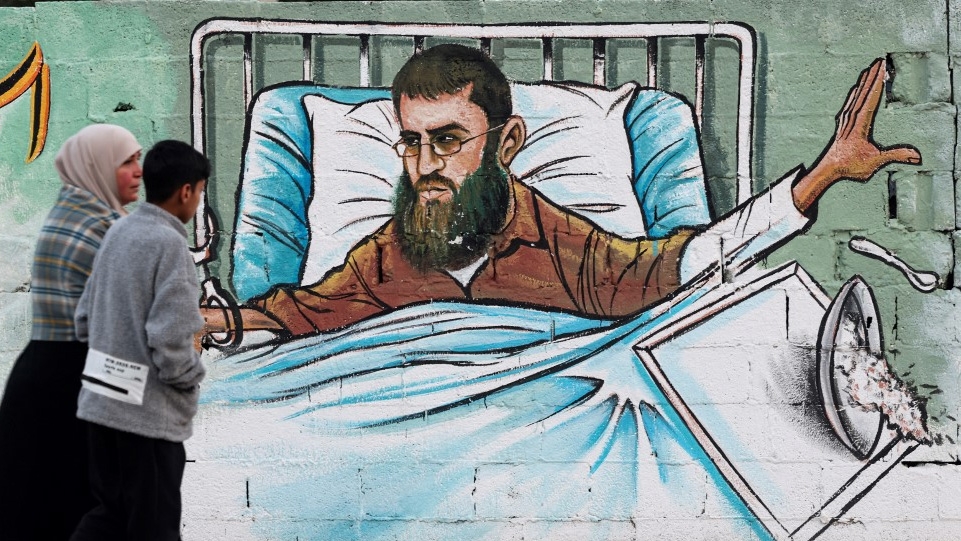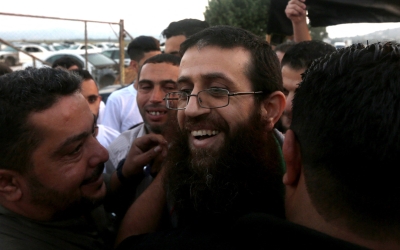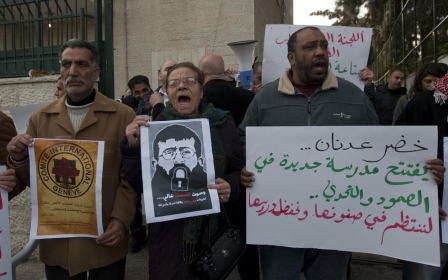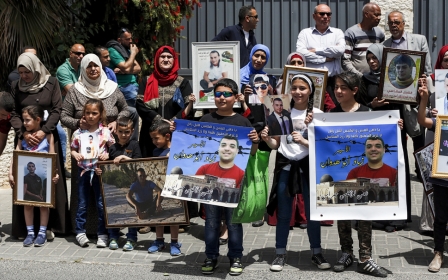How Khader Adnan taught me to push for freedom from prison

I first heard the name of Khader Adnan during an infamous incident at Birzeit University in 2000, after the French prime minister at the time, Lionel Jospin, had described resistance to the Israeli occupation as “terrorist acts”.
During a visit by Jospin to Birzeit, one student took a brave stand and shouted at him. This aroused the feelings of all students, who hurled stones towards Jospin to expel him from the university.
That student was Adnan, who later became famous for his unique form of resistance through hunger strikes. He died in prison this week at the age of 45.
I met Adnan during my second arrest in 2004, when Israeli soldiers transported us in a bus from Megiddo prison in northern Palestine to the Negev (Naqab) in the south.
The soldiers insulted the prisoners on the bus, and Adnan protested angrily. After we arrived - following six hours of fatigue and exhaustion, sitting on metal seats - he refused to get off the bus as a protest against this treatment, and they ultimately returned him to Megiddo.
New MEE newsletter: Jerusalem Dispatch
Sign up to get the latest insights and analysis on Israel-Palestine, alongside Turkey Unpacked and other MEE newsletters
In 2011-12, Adnan went on a hunger strike for 66 days to protest being held in administrative detention, without charge or trial. As a journalist, I covered this story - but deep down, I was curious about his stubborn personality and the tactics he was using.
In 2015, I was arrested and taken from my home in front of my children and transferred to jail, where I endured a harsh and brutal interrogation. Alone in my cell, I remembered Adnan’s rejection of all forms of injustice; so I, too, declared a hunger strike to reject this oppression.
The culture of no
It is odd how a hunger strike, which literally eats the body from the inside, gives a prisoner unparalleled power: the power of rejection, and saying “no” in the face of jailers who view you as nothing more than a number.
I knew Adnan didn’t like death or suffering. He loved life, but he wanted a life that was free of injustice and humiliation - the type of life he lived when he was with his wife and children. He saw hunger striking as the most powerful weapon he had that would allow him to return to this life as soon as possible.
In this way, I rejected the dungeon and humiliation of imprisonment, in search of freedom and life - but this came with a heavy price
The culture of no, to which the Palestinian people adhere, is centred on refusing to surrender or to be tamed or subjugated. This is reflected in all aspects of life: confronting the occupation in the field, working to lift the siege on Gaza, maintaining a presence in Al-Aqsa Mosque, and fighting for the return of refugees and the freedom of prisoners.
Because we believe in this culture, we insist that freedom - as for all other peoples - is our path, despite the chains and the isolation that Israel imposes upon us.
Hunger striking is the most peaceful way in which a person can reject the violence of occupation authorities, especially in prison. Keeping someone in prison under the pretext of “security concerns”, without laying charges or allowing a trial - even in courts that are biased against Palestinians - is the height of injustice.
During a hunger strike, a new battle begins. It marks a new stage in life, where one can make a choice between living in humiliation and chains forever or carving a path toward freedom with a body that refuses to be tamed by prison walls.
Message to the world
In deciding whether to pursue a hunger strike, two images crystallised within my mind.
The first was how life would look if I simply stayed in prison and accepted being tamed; the second related to continuing the culture of no, which brought me to prison in the first place when I said no to occupation authorities.
Now, I was saying no to my arrest, and yes to freedom. This is how the idea was strengthened in my mind - a hunger strike in search of freedom, to meet my wife and children, and to return to life.
In this way, I rejected the dungeon and humiliation of imprisonment, in search of freedom and life - but this came with a heavy price. The hunger striker must be patient, bear the pain, endure fatigue, and focus all his thoughts.
A great tragedy is being carried out by Israel against Palestinian prisoners, including the sick, the elderly, women, and children.
They endure medical negligence, malnutrition, cramped cells, psychological torment, court delays, and much more. This horrible treatment, flying in the face of their humanity, has led to the deaths of many prisoners - all as the world looks on impassively.
But these conditions can be confronted by an unarmed prisoner on hunger strike, whose message to the world rings out loud and clear: look at us!
The views expressed in this article belong to the author and do not necessarily reflect the editorial policy of Middle East Eye.
Middle East Eye delivers independent and unrivalled coverage and analysis of the Middle East, North Africa and beyond. To learn more about republishing this content and the associated fees, please fill out this form. More about MEE can be found here.






